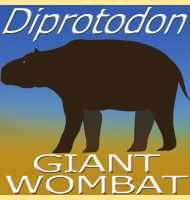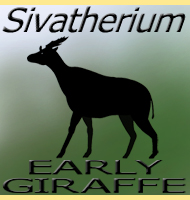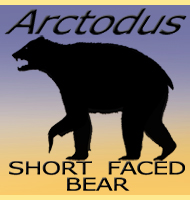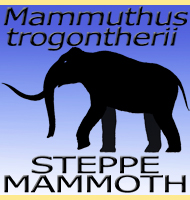


Pelorovis
Name: Pelorovis
(prodigious/monstrous sheep).
Phonetic: Pel-oh-rove-iss.
Named By: Reck - 1928.
Classification: Chordata, Mammalia,
Artiodactyla, Bovidae.
Species: P. antiquus, P. howelli,
P. oldowayensis, P. turkanensis.
Diet: Herbivore.
Size: Around 3 meters long.
Known locations: Across Africa.
Time period: Very late Pliocene through to the end
of the Pleistocene, though some may have survived in Africa to as
recently as 2000BC.
Fossil representation: Remains of around 100
individuals, quite possibly more.
Although
the name Pelorovis describes a sheep-like
creature, Pelorovis is
actually thought to have been more like an African buffalo. At three
meters long and with bulls possibly being up to and even beyond two
thousand kilograms in weight, Pelorovis is a
contender for one of the
largest bovine mammals to ever walk the Earth.
Aside
from the huge body, Pelorovis species are famous
for their immense
horns. The horn cores of these are as much as one meter long,
though it’s important to remember that this is just the core. In
life the horns would have been covered by keratin, the same Protein
that human finger and toe nails are made from, but a substance that
very rarely fossilises. With a covering of keratin surrounding the
horn core, the total length of the horns may have been as much as two
meters long depending upon the species. In addition the way the horns
curve depends upon the species in question.
For
example the horns of Pelorovis antiquus curved down
before pointing
upwards similar to a water buffalo (Bubalus)
whereas Pelorovis
oldowayensis had horns that were the opposite, arching up
before
curving round to point towards the ground. Others like Pelorovis
turkanensis were similar to P. oldowayensis,
though not as strongly
curved so that they pointed more towards the sides.
----------------------------------------------------------------------------
Random favourites
 |
 |
 |
 |




